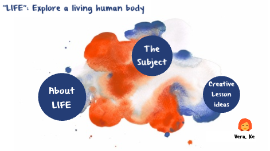Animated Presentation
Transcript: Scientific Method in Chemistry Branches of Chemistry Chemistry is divided into several branches, including organic chemistry, inorganic chemistry, physical chemistry, analytical chemistry, and biochemistry. Each branch focuses on different aspects of matter and its interactions, leading to diverse applications and research areas. The scientific method is integral to chemistry, involving systematic observation, experimentation, and analysis. It allows chemists to formulate hypotheses, conduct experiments to test them, and draw reliable conclusions based on empirical evidence. Adding final touches... Last checks... Chemistry is the scientific study of matter, its properties, compositions, and the changes it undergoes during chemical reactions. Understanding chemistry is essential for grasping the interactions of substances within the universe. Key milestones in chemistry include the establishment of atomic theory by John Dalton, the discovery of elements by Dmitri Mendeleev, and the development of the periodic table. These advancements marked significant progress in our comprehension of chemical reactions and properties. Thinking cap on... Chemistry is defined as the branch of science that deals with the study of the composition, structure, and properties of substances, as well as the changes they undergo during chemical reactions. It serves as the foundation for numerous scientific disciplines and applications. Fine-tuning... Chemistry plays a crucial role in everyday life, influencing various aspects such as cooking, cleaning, and health. From the ingredients in food to the substances in medications, chemistry affects how we live, work, and interact with our environment. Adding final touches... Emerging technologies such as green chemistry and nanotechnology are shaping the future of chemistry. Innovations in sustainable practices and materials promise to address global challenges like climate change and resource scarcity. Getting it ready... Food chemistry involves studying the chemical composition of food and how processing affects quality and safety. Understanding chemical reactions in food helps improve flavor, preservation, and nutritional value, ensuring food safety. Almost there... Almost there... Polishing up... Design at work... Environmental chemistry addresses the chemical processes occurring in the environment and their effects. This field is crucial for assessing pollution, developing strategies for remediation, and promoting sustainable practices to protect ecosystems. Polishing up... Chemistry plays a pivotal role in various fields, impacting daily life and technological advancements. From medical applications to environmental solutions, the influence of chemistry is profound and far-reaching. Getting it ready... Atoms consist of subatomic particles: protons (positively charged), neutrons (neutral), and electrons (negatively charged). Protons and neutrons are found in the nucleus, while electrons orbit around it. Atomic structure is the fundamental framework of matter, consisting of atoms as the basic units. Grasping their components will illuminate the nature of elements and their interactions. Design at work... Hang on... Hang on... Almost there... Adding final touches... Chemical processes are fundamental in manufacturing various products, from plastics to textiles. Industrial chemistry focuses on optimizing production processes and ensuring sustainability, reducing environmental impact while meeting consumer demands. Chemistry is essential in developing pharmaceuticals, vaccines, and diagnostic tools. Medicinal chemistry focuses on designing and creating compounds to treat diseases and improve health outcomes, significantly enhancing quality of life. Electron configuration describes the distribution of electrons in an atom's energy levels. Understanding this arrangement is crucial as it influences the atom's chemical properties and bonding potential. Atoms are the smallest units of matter that retain the properties of an element. Composed of a nucleus surrounded by electrons, they serve as the building blocks for all substances in the universe. The atomic number defines the number of protons in an atom's nucleus, determining the element's identity. Atomic mass is the weighted average mass of an atom, accounting for both protons and neutrons. Getting it ready... Isotopes are variants of elements with the same number of protons but different neutrons, affecting atomic mass. Ions are charged particles formed when atoms gain or lose electrons, impacting their chemical behavior. Last checks... Fine-tuning... Chemical reactions often involve energy changes, either releasing (exothermic) or absorbing (endothermic) energy. Understanding these energy transformations is crucial for grasping the thermodynamics of reactions and their applications in fields such as bioenergetics and chemical engineering. Several factors influence the rate and direction of chemical reactions, including temperature,

















